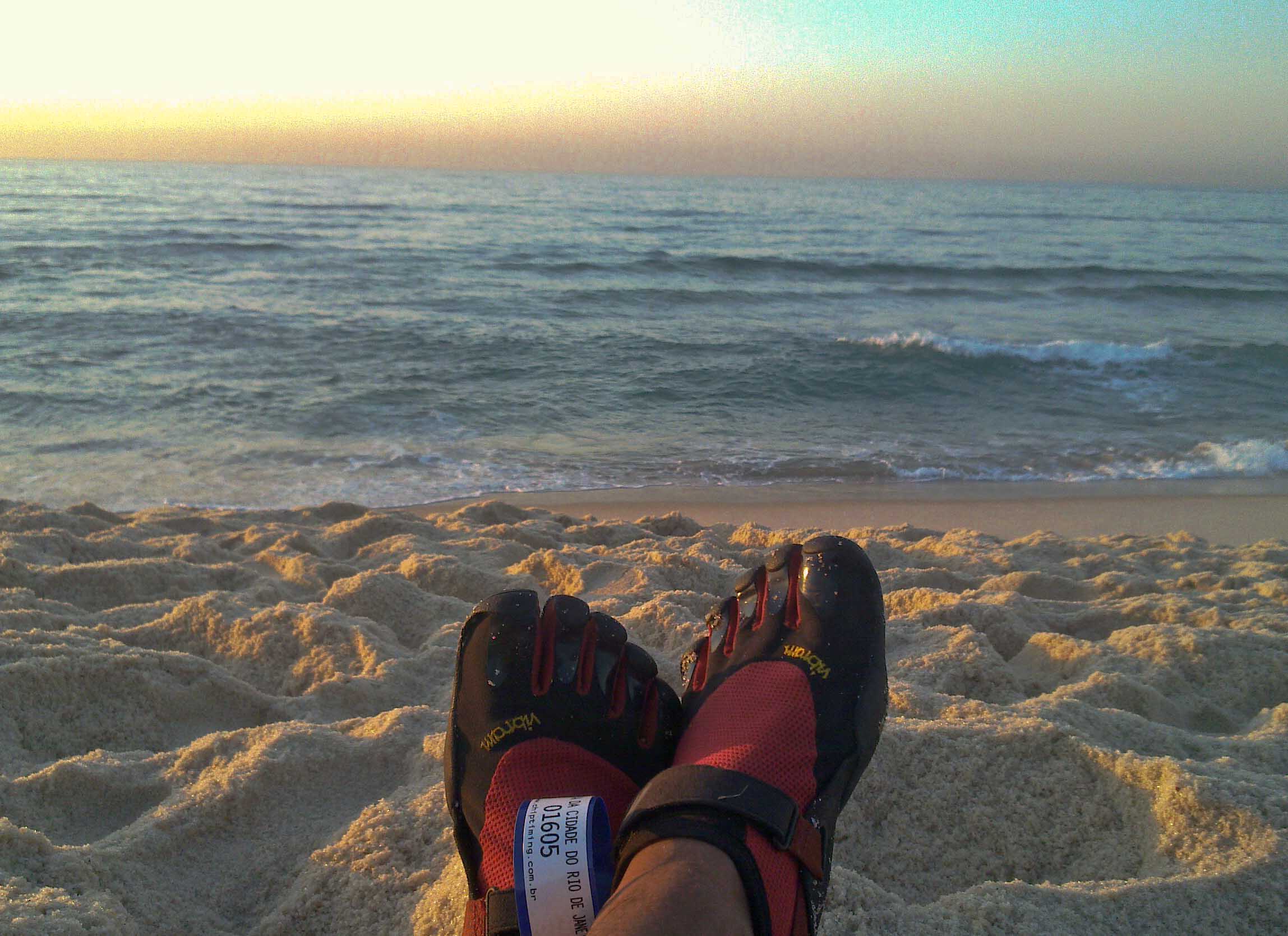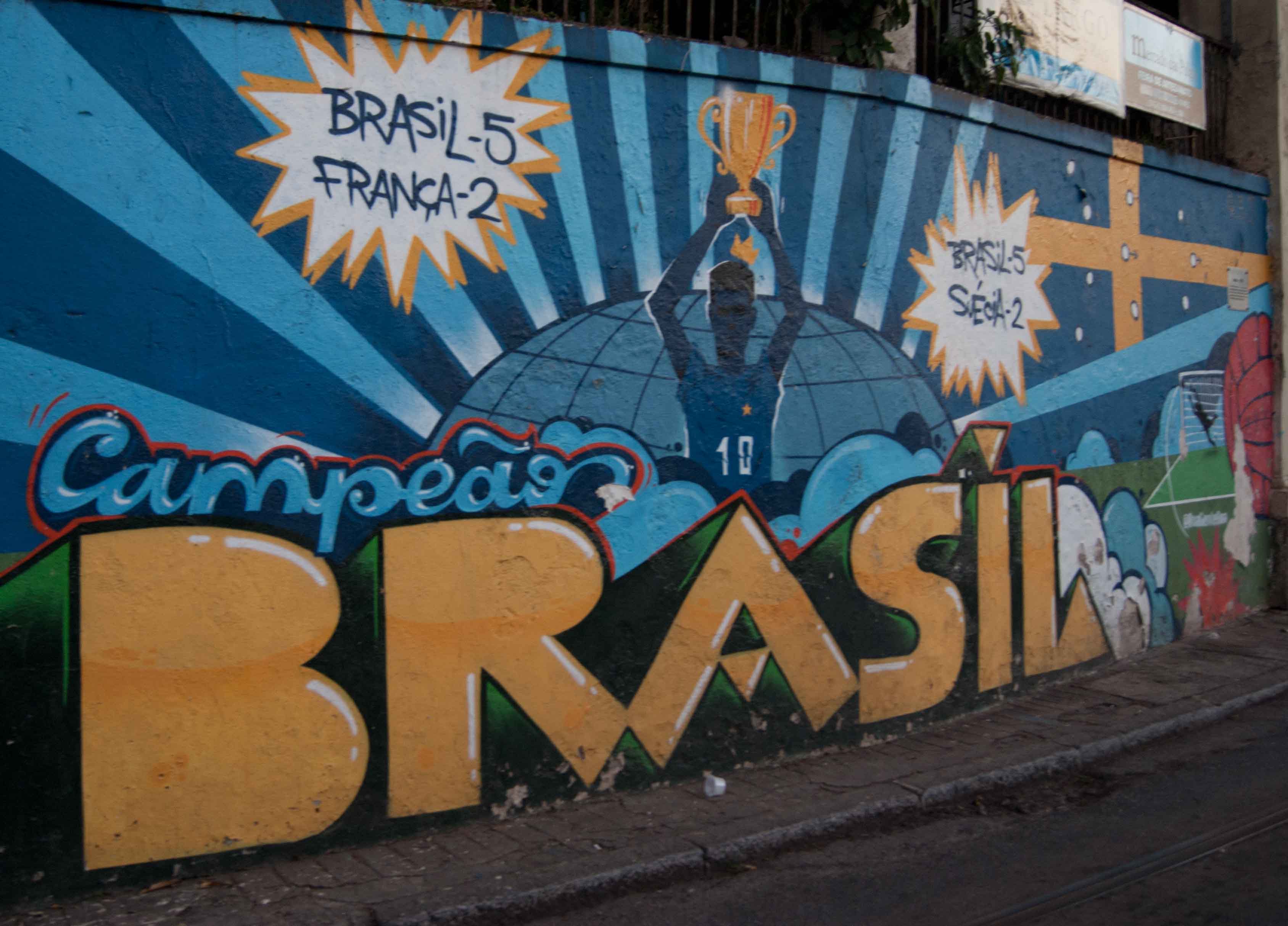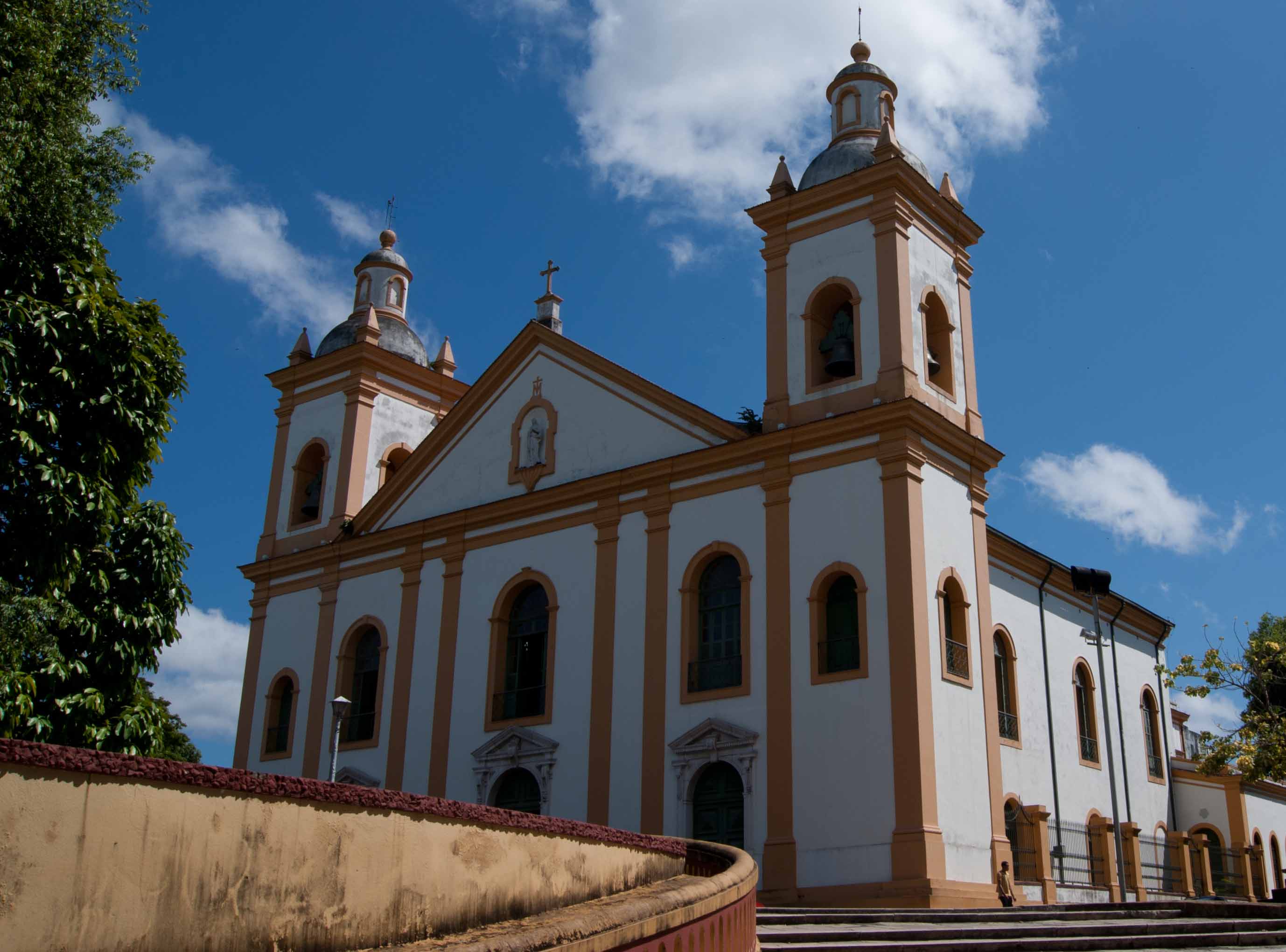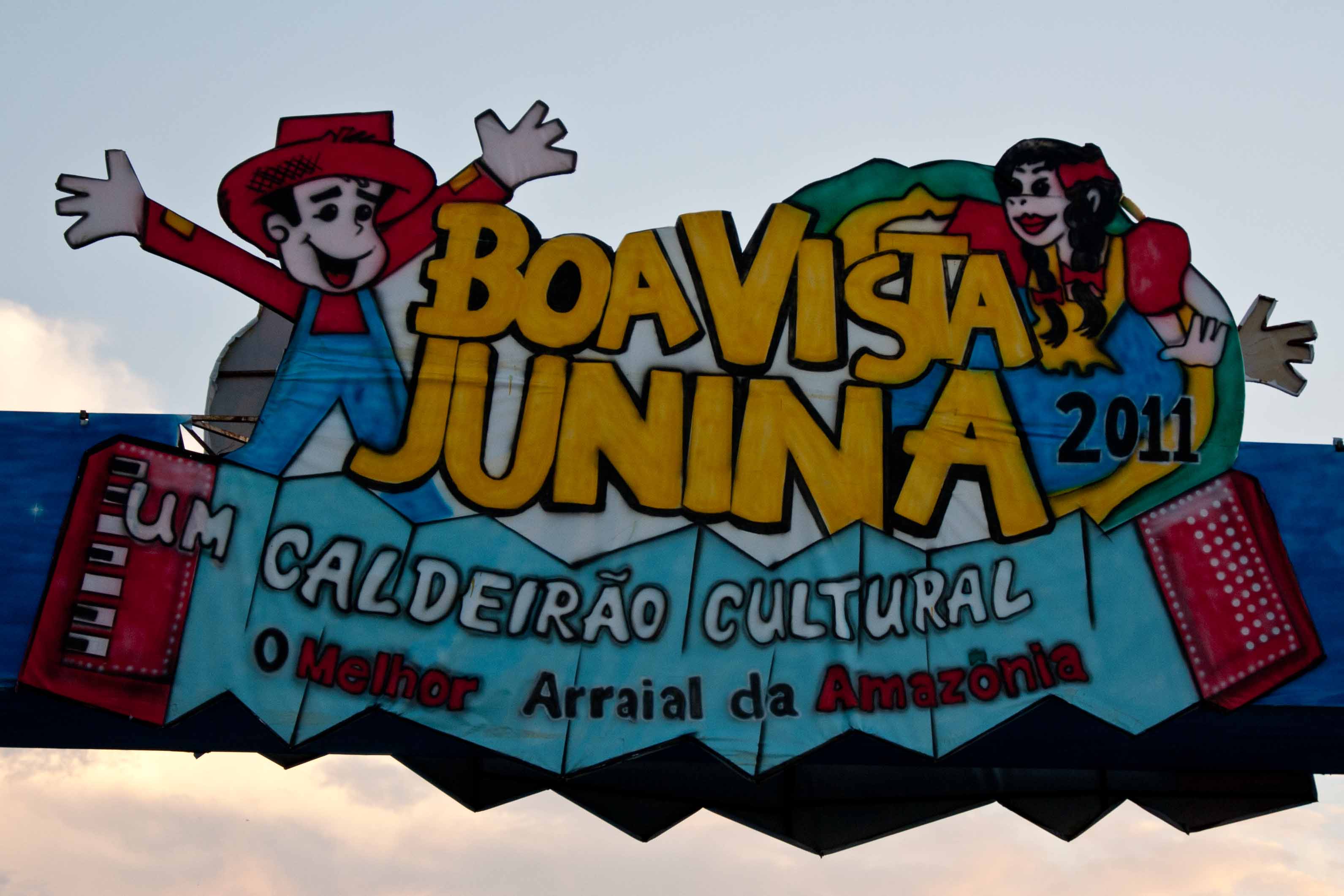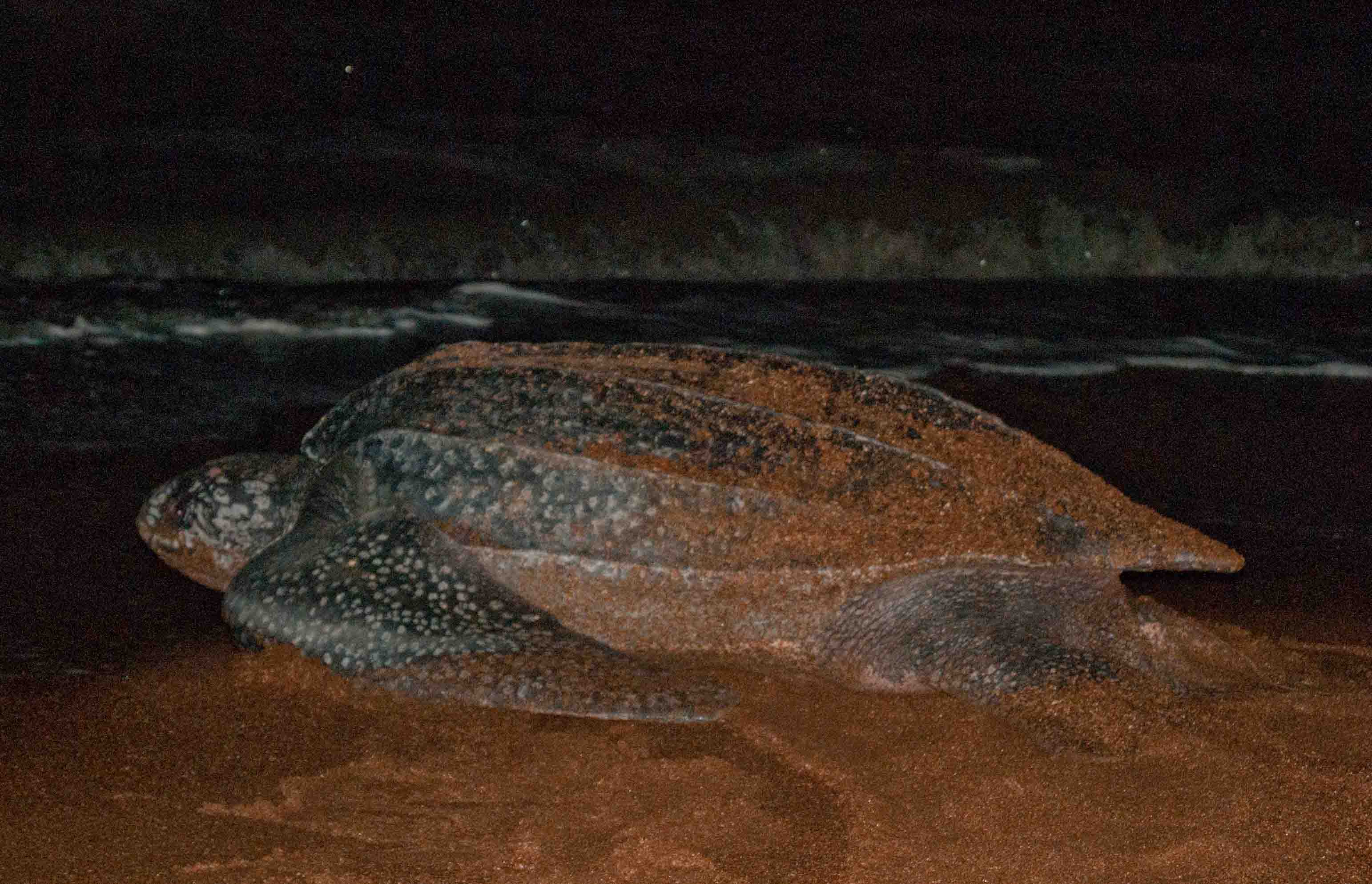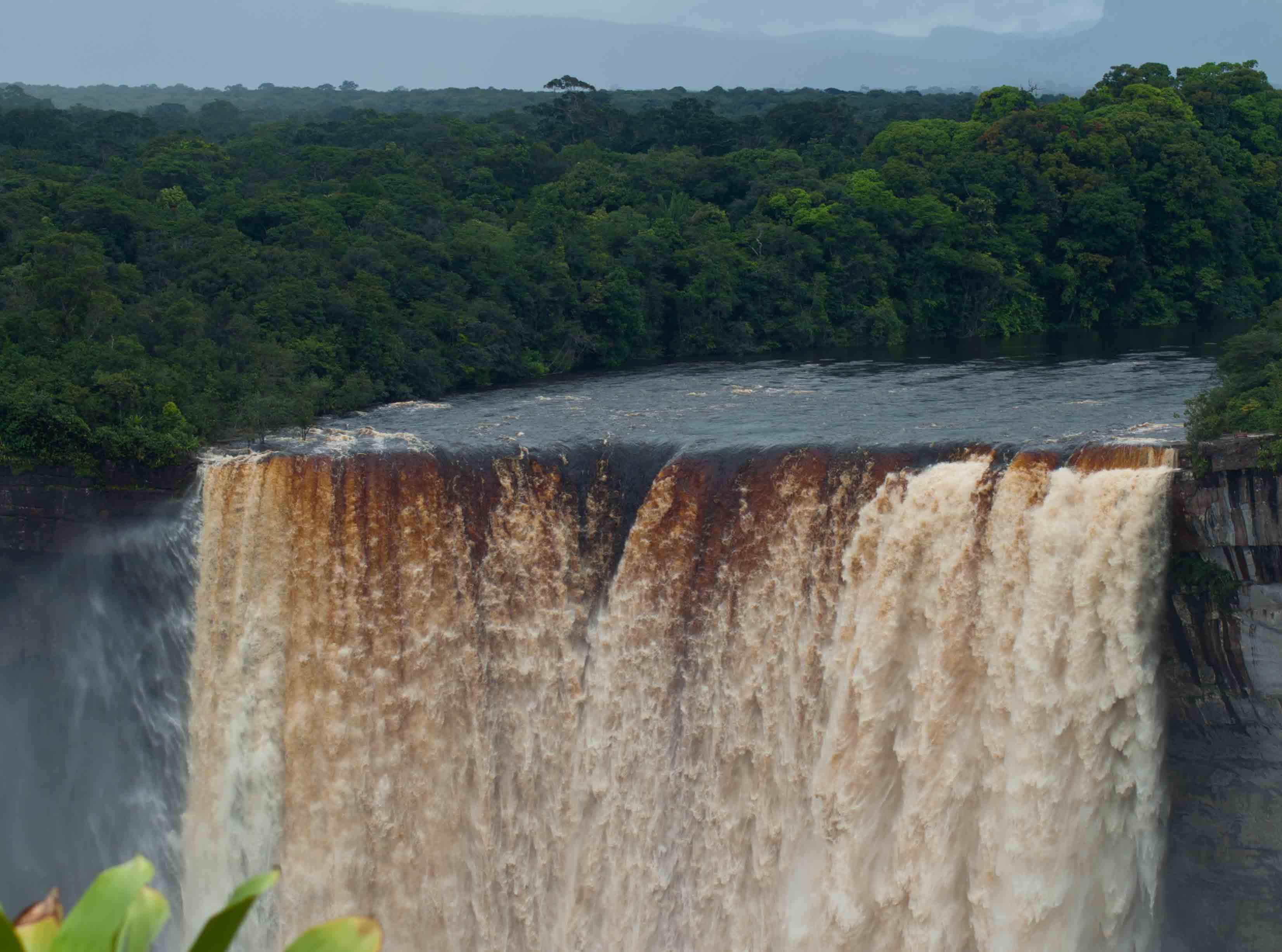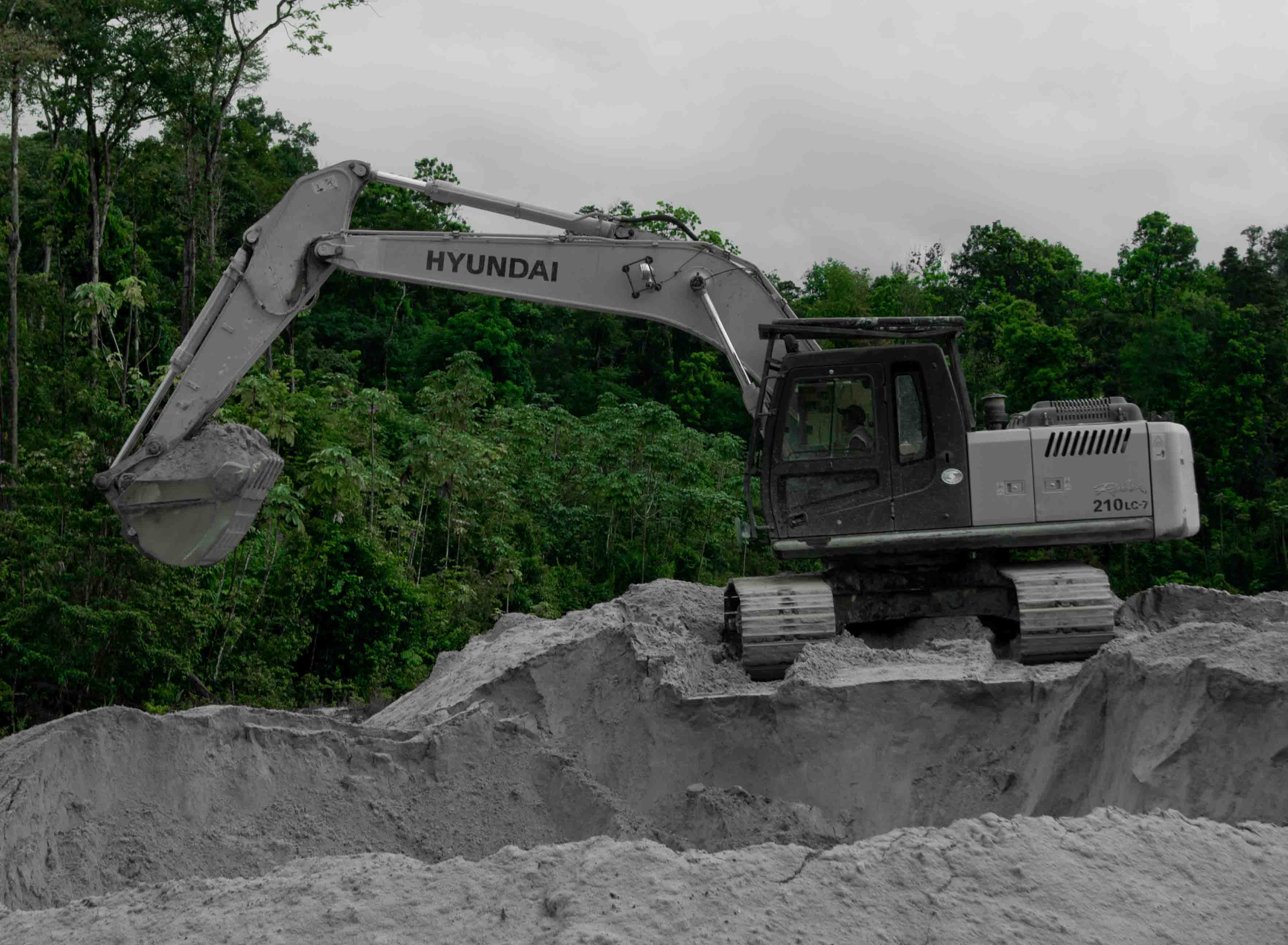Running 42km and 195 metres (or 26 miles and 385 yards) is no walk in the park. And having voluntarily signed up for and completed this act of physical torture, I can vouch for this. The name ‘marathon’ originates from the tale of a Greek messenger running from the battle of Marathon to Athens and declaring to the Greek people that they had won the battle before collapsing and dying. Recent advancements in technology now mean that running a marathon doesn’t necessarily result in death. Phew…
The Rio Drama (as it unfolded)

Running a marathon along some of the World’s most famous beaches couldn’t be too hard right?
The first 15 km passed in a haze. I had set myself a time of 5 minutes per km and stuck to this time for the first 15 km without any problems. The weather was a perfect 20 degrees without being too humid and the sun had just risen. I was tempted to increase my speed at this point but decided to go with my pre-marathon internet research and stick to the pace.
Having hit the halfway mark at my planned pace (1 hour 45 minutes), I was just about giving myself a silent pat on the back when I hit the first hill and tunnel. The gradual ascent seemed never-ending but the cool tunnel at the end of the hill helped me claw back the minutes I’d lost on the way up. The end of the tunnel marked the beginning of the stretch of Rio’s world famous beaches.
São Conrado gave way to Leblon, Ipanema and finally Copacabana. The crowds heading to the beach stopped by and offered occasional hi-fives to the exhausted runners. This was between the 25 km and 35 km point. Although I wasn’t tired, I’d already been running for 2 hours by then and my resolve was being tested. Spotting a few backpacker friends on the road with signs reading “Vai Jason” (Go Jason – in Portuguese) did a lot to keep me going.
Kilometres 35 to 42 were probably the most intense and difficult physical activity I have ever attempted. It was pure torture. I tried my best to keep my mind occupied and off the run but maintaining my pace was impossible. After having slowed down to an easy jog to grab a bottle of electrolyte, I never recovered. The brass band on Copacabana and laser show in the tunnel offered momentary respite but didn’t do much to mask the pain. The final 200m sprint didn’t seem like it was worth the effort until I noticed a 70 year old man shuffle past me. That snapped a chord and I broke into a dash for the finish.
The result: 3 hours 39 minutes and 58 seconds.
Success.
What I learnt from my first marathon
1. Train like your life depends on it
Nothing will prepare you better for a marathon than a solid 18-week training schedule. Make your schedule and then stick with it. To prepare for my 42 km run, I ran 640 km in training over a 3-month period, slowly building up my mileage every week. I used Hal Higdeon’s training calendar and downloaded it to my calendar using “Your Training Calendar.” A lot of blood and sweat goes into the marathon before you’ve run past the start line. And for good reason. 18 weeks down the line, all you’ll have to do is relax and let your training take over.
2. Don’t experiment on race-day
As you work your way through your training, you’ll pick up a few tricks and learn more about your body and your running style. Maybe sleeveless t-shirts get you sun burnt and chocolate gels spur you on. These tiny details will help you finish your marathon. Come race-day, you should know exactly when you’ll hit the halfway mark and at which km you should reach for your first gel sachet. I used a larger water bottle on race day (1L on race-day vs. 650 mL in training) and the extra weight of this bottle was on my mind throughout the entire race. Moral of the story: don’t experiment on race day.
3. Have fun
Running is fun. If you treat this marathon as a chore, it’ll end up being horrible. Remember there’s nothing as liberating as running. I kept repeating the following 3 words throughout my marathon and it made life a lot easier
Breath… Smile… Run…
As you being to enjoy this experience, focus not on the finish but on the journey. This way things get a lot easier. You notice the blue sky, the cheering crowds and all of a sudden, your legs get a lot lighter and it feels like you’re flying.
Rio is undoubtedly one of the most beautiful cities in the world. It’s not hard to see why…
1. Beaches

A perfect beach would have white sand and blue water line with beautiful mountains and a rainforest for a backdrop. Now how about all of these for a city beach? Rio’s pride and joy – Copacabana and Ipanema figure in any list of the world’s most famous or beautiful beaches. Who would need to go on holiday if this was home!
2. Sports Central

If you’re a sports fan, then Rio is heaven. With the turn of the millennium, every important sporting event has made a beeline for Rio. The Olympics looks set to take the world by storm. Rio also plays host to one of the most beautiful marathons around – all along the coast with Christ the Redemeer spurring you on.
Did I mention the Soccer World Cup?? Enough said.
3. Jesus Dude

Cristo, Christ the Redeemer, Christo Redentor, Jesus dude – call him what you want, he’s impossible to ignore in Rio and stands guard over the city. The statue up close is monstrously big and is as tall as a 13 storey building; an engineering marvel and a work of art. If you manage to drag your eyes (and cameras) away from Jesus, the gallery from the top of Corcovado offers a panoramic view of Cidade Maravilhosa (the magnificent city).
4. Pao de Acucar (Sugar Loaf Mountain)

It would seem logical that if you’ve seen one viewpoint of the city, you’ve seen them all.
Wrong.
The sugar loaf mountain, perched at the edge of the city offers spectacular views of the city on one side and the coast on the other. A pleasant hike through the park is an alternative to paying an arm and a leg for the cable car. Sunset on the sugar loaf mountain is spectacular and being able to see Jesus watch over the city is priceless. And of course a beer at the top does help enhance the overall experience.
5. Handgliding / Paragliding

Think flying off a cliff. Think Rio.
Running off a ramp 600m above sea level, cruising over the world’s largest city-forest, descending over the Atlantic Ocean and finally landing on the beach is a wild ride for any adrenalin junkie (and that’s an understatement). With the wind in your hair and the sun on your shoulders this is probably the best way to literally get a bird’s eye view of the beaches, mountains, rainforest, favelas and the city. Priced at a steep 200 USD per flight (5-10 minutes), this is a once in a lifetime opportunity (at least for the financially challenged) to fly. And taste real freedom.
6. A Walk Through Time

Something that people might forget to mention about Rio is how old it is. Beautiful buildings, remnants of Portuguese architecture are splashed across the city. They stand in start contrast to the modern day skyscrapers that threaten to take over. A walk through the centre of the city drives home the fact that Rio wasn’t built in a day (couldn’t resist) and was actually founded in the 16th Century.
7. Santa Teresa

This Bohemian neighborhood in Rio is home to budding artists and can be reached by tram from the city. The 20-minute tram ride to Santa Teresa is a treat by itself. At half a dollar (US), it’s also the cheapest tourist attraction in the city. Santa Teresa sits on a hill and offers picturesque views of the sun setting over the city. Cobblestone streets, graffiti all over the walls and tiny hole in the wall shops selling artwork makes walking through the streets of Santa Teresa quite an experience. It feels like you’ve entered a new world far removed from the hustle and bustle of the city below.
8. Music

In Brazil, music is always in the air and here Rio is no exception. The bar and club scene here is huge with the music played ranging from alternate rock to samba to the World famous Bossa Nova that incidentally originated in Rio. The Lapa Street parties draw thousands and the Sunday Night Favela Funk party is a different animal altogether. The World’s largest music festival – Rock in Rio returns for another edition in 2011, this time headlined by RHCP.
Video with Brazil street music coming your way in a couple of days. I’ve uploaded a tiny snippet for now.
9. Suco Bars

As with any big city, most people are always rushing to get somewhere, but in Brazil there’s always time to stop at a suco (juice) bar. You can choose from an endless list of fruits many of which the rest of the world are blissfully unaware of. Either that or I need to spend some time on my Portuguese. Suco bars are at every street corner and grow on you after a while. In my opinion every city could do with a healthy dose of suco bars.
10. Carnival

Come February and it’s carnival season. Perhaps the most famous carnival in the world; samba schools begin rehearsals for the carnival in September. I visited in July but was fortunate enough to stumble upon the filming of a promotion for Carnival 2012.
 Located practically in the middle of nowhere (the Amazon), Manaus faded from the spotlight after the rubber boom ended in the early 20th Century. The majestic Teatro Amazonas still stands in the middle of the city reminding everyone of the glorious yesteryears. This city still plays home to 2 million people or 50% of the people who live in the Amazon.
Located practically in the middle of nowhere (the Amazon), Manaus faded from the spotlight after the rubber boom ended in the early 20th Century. The majestic Teatro Amazonas still stands in the middle of the city reminding everyone of the glorious yesteryears. This city still plays home to 2 million people or 50% of the people who live in the Amazon.
A walk through the streets on a Sunday shows that the city is still full of life, color and beauty.
With Guyana to the East and Venezuela to the North, Boa Vista serves as Brazil’s quaint little border town (Bonfim is a village and is disqualified). Practically cut off from the rest of Brazil by the vast wilderness known as the Amazon, Boa Vista hasn’t let this hinder its development in any way. The affluence of Brazil is clearly visible on a road trip across the border from Lethem in Guyana to Boa Vista in Brazil. Mud roads turn into paved roads (and sometimes beautiful cobble-stoned streets). Standalone warehouses turn into impressive buildings. Shops turn into supermarkets. You get the point.
Despite bordering an English speaking and a Spanish speaking Country, a person who speaks anything but Portuguese is as elusive as a Goan teetotaler. Imagine the plight (and fright) of a linguistically challenged backpacker who naively rocks up without packing a word of Portuguese. Revisiting the memory of this experience is still terrifying..!! However, Brazilians are warm people with a very outgoing culture. They brushed aside all language barriers and I successfully hitchhiked across the Brazil-Guyana border into Boa Vista. I was practically treated like family by the unusual bunch of Environmentalist Evangelists who gave me a ride in their hippy Volkswagon bus.
 From a tourist perspective, there’s nothing much to do in Boa Vista. Taking a boat ride along the river to watch the sunset seems to be the only option. I got lucky and stumbled upon the annual carnival and had the privilege of watching traditional dancers compete in their colorful costumes and also managed to explore a variety of Brazilian cuisines on offer at the carnival stalls.
From a tourist perspective, there’s nothing much to do in Boa Vista. Taking a boat ride along the river to watch the sunset seems to be the only option. I got lucky and stumbled upon the annual carnival and had the privilege of watching traditional dancers compete in their colorful costumes and also managed to explore a variety of Brazilian cuisines on offer at the carnival stalls.
Music filled the air, the smell of barbequed meats filled my nostrils and caiperinhas filled my stomach (I’m a vegetarian) – this seems to be the common theme for most of my adventures in Brazil.
Garota de Ipanema
Bossa Concert at a bar in Ipanema – seemed fitting that they threw in their version of this legendary song.
Tons of Brazilian music to upload once I get hold of my computer and a decent internet connection. Watch this space..
 6 of 7 species of sea turtles are either threatened (Loggerhead), endangered (Olive Ridley and Green) or critically endangered (Leatherback, Kemp’s Ridley, and Hawksbill). No information is available on the status of the Flatback turtle. As a result of this several conservation projects have sprung up across the world.
6 of 7 species of sea turtles are either threatened (Loggerhead), endangered (Olive Ridley and Green) or critically endangered (Leatherback, Kemp’s Ridley, and Hawksbill). No information is available on the status of the Flatback turtle. As a result of this several conservation projects have sprung up across the world.
You might wonder why there’s a hoo-haa about sea turtles when we’ve got bigger problems like polar bears and melting ice caps to worry about. Sea turtles are an integral part of the marine eco system. They (and manatees) eat sea grass and keep sea grass short. Sea grass needs to be short in order to remain healthy and also provides a perfect breeding ground for other marine species. Far fetched as it may sound, turtles also are responsible for flora and fauna in some deserts. An estimated 150,000 pounds of turtle eggs were laid on the beaches of Florida last year alone and eggs that don’t hatch provide vital nutrients to the soil and encourage the growth of plants.
Although this bout with extinction isn’t entirely the fault of humans, we’re not blameless. Turtle eggs and meat have been considered delicacies throughout the World. Turtles have been poached for their shells from time to time as well.
Guyana has its very own Turtle conservation project that has been running for the past 25 years. Located in a remote region of Guyana, Shell beach sits on the border of Guyana and Venezuela. If you spend enough time on the beach you’re sure to spot speedboats making quick drug runs across the border. Getting to Shell beach however, is quite a challenge. The daylong trip requires a bus from Georgetown to Parika, boat across the Essequibo to Supernaam, bus to Charity and finally a 5-hour speedboat ride to Shell Beach. This 5-hour boat ride involves navigating ‘the river of 99 turns’ and is unforgettable for the still black water and the pristine untouched banks. While exceptionally long, the trip is part of the adventure and if you’re lucky you’ll get to see otters, scarlet ibis and river dolphins before even getting to the turtles.
Sand on shell beach contains tiny broken up pieces of shells, which probably gives the beach its name. Mosquito beach would be the obvious name if an alternate name were necessary. 6pm and the mosquitoes come out and attack every moving object in sight demonstrating a clear lack of respect for insect repellant and DEET.
Once you put the mosquitoes behind you, a 4 km trek down the beach gives you the chance to spot turtles laying their eggs along the shore. Turtles lay their eggs at night since the usual predators (seagulls, birds, dogs etc) aren’t around. They hobble onto shore and start digging a wide foot deep body pit. One this is complete, they use their hind flippers to dig a small hole that’s up to another 2 feet deep. Flippers are made to swim and not dig, and so progress is painfully slow. All through this process, the turtles seem to go into a trance focusing only on the task at hand and completely ignoring the tiny bunch of curious tourists. Once the hole is ready, the turtles lay anything between 50 to 200 eggs (depending on species) and then cover the eggs with sand, pressing down each mound to ensure that the eggs are well packed. The turtle then flicks around sand in a wide area to protect the location of its eggs and heads back to the sea. The entire process takes between 30 minutes to 2 hours depending on the turtle’s skill.
Eggs take 2 months to hatch and little turtles have an evolutionary drive to dig their way out of the sand at night, avoiding predators and heading towards the brightest light source (supposed to be the moon). However, bright lights on several beaches have contributed to the confusion among the hatched turtles causing survival issues. Added to this, turtle eggs are a rich source of protein and are easy pickings for predators if they manage to find the eggs. The dogs at Shell beach try to dig up the eggs for a tasty treat. (However, the jaguars in the adjoining forest are always on the lookout for a stray dog for a tasty treat.) It takes decades before these young turtles reach maturity and start reproducing. One in about a hundred hatched turtles reaches maturity. The leatherback turtles are the biggest turtles and the leatherbacks we spotted at Shell beach were over 6 feet long.
A typical turtle-spotting trek would last 5-6 hours and would depend on the tide since turtles prefer to come out at high tide to prevent the waves from an advancing tide uncovering their eggs. Turtles are very sensitive to white light (but can’t see red light). Scrambling over toppled coconut trees on an eroding beach with only a little red light can be a challenge but the rewards are worth the effort.
Guyana, Costa Rica, Trinidad & Tobago, Surinam and Sri Lanka come to mind when talking about endangered sea turtles. Have you had the chance to see turtles lay their eggs elsewhere?
Georgetown – On a Bicycle
Cycled around the city taking videos of various scenes with my phone camera. This is what a typical day in Georgetown looks like..
I’ll confess that the heading was a blatant lie. Contrary to popular opinion, Kaieteur Falls isn’t the World’s largest single drop waterfall. It’s the ‘single-drop’ tag that confounds the occasional well-read tourist. There is no such thing as the World’s largest single drop waterfall. Most of us are aware that the world’s largest waterfall is Zimbabwe’s Victoria Falls and world’s highest waterfall is Venezuela’s Angel falls. Kaieteur may not be the largest or the highest but nevertheless is one of the most powerful waterfalls in the World (not to mention beautiful) owing to an extraordinary mix of height and volume of water. Quite complicated.
Day 1 – Georgetown to Amatuk Falls
As with most adventures from Georgetown, this one starts off with an indecent number of people being shoved into a tiny little mini van with barely enough room to breath, let alone move. Roads extend only up to 50km out of the city after which the minivan has no option but to plough through the mud. Fast-forward 8 hours and a frazzled bunch of hikers stepping out of a minivan in Mahdia doesn’t make a pretty sight.
Mahdia is a tiny little mining town with populations varying between 3,000 and 10,000 (depending on gold rush season). As with most mining towns, its quite difficult to find a building that’s not a bar. A beer later, we get our first glimpse of the beautiful Guyanese rainforest from the back of a 4×4 that takes us to the Potaro River. Cruising the peaceful river at dusk is amazing. Thousands of fireflies dotting the banks add to the experience. Foam on the river tells us that we’ve reached Amatuk falls and we put up our hammocks (with much difficulty) to camp for day one. A bottle of El Dorado rum provides liquid courage before round 2 of the hammock battle commences. Finding the sweet spot of a hammock is tricky business. Don’t believe me? Try spending a night in a hammock.
Day 2 – Amatuk Falls to Tukeit
The morning brings a heavy downpour. Did we really expect to get through the rainforest without getting wet? We finally give up and head out in the rain to visit a diamond mine on Amatuk Island. Loading our stuff onto another boat (on the other side of Amatuk falls – smart eh?) we get back on the river. A pit stop at a river dredge provides momentary respite from the rain.

Rivers are one of the most erosive forces on this planet especially in early stages when they’re mountain streams full of energy (potential). As a result, they end up eroding rocks and dragging the gravel along as silt. River dredges operate by scraping the bottom of a river and sucking up all the loose gravel. This gravel is then flushed through a sifting machine that gets rid of lighter rocks and retains the heavier ones. These heavy rocks and then taken to a plant for gold to be extracted. The only flaw with this mechanism is that when you filter out lighter materials, diamonds get thrown away as well. This gives rise to a secondary industry. Lacking proper diving equipment, locals use tubes attached to an air pump to dive to the bottom of the river. Having no training or knowledge of diving safety procedures, they often fall victim to the bends.
Somewhere along the way we get our first glimpse of Kaieteur. Our guide explains that the next time we see the falls; we’ll standing right beside it. Our boat drops us off and we scramble along the rocks to visit Big Stone Waterfall but this being the monsoon season, our hike quickly turns into a swim. Fortunately at the time we didn’t know that we were swimming through electric eel infested waters and we happily swam to camp. Our hammock skills were noticeably better.
Day 3 – Tukeit to Kaieteur
 The trek from Tukeit to Kaieteur involves hiking past “Oh My God” mountain named for its steep slopes. The hike through this rainforest constantly reminds us that we’re in the middle of nowhere. Although Kaieteur is the top tourist attraction in Guyana, we hadn’t bumped into a single tourist this far. Hiking through pristine forest abruptly gives way to a clearing on the top of the mountain and in the distance we hear the roar of Kaieteur. Our first view of Kaieteur Falls up close triggered a photo frenzy that lasted 10 mins before we realized that we had a day to get to know this waterfall better.
The trek from Tukeit to Kaieteur involves hiking past “Oh My God” mountain named for its steep slopes. The hike through this rainforest constantly reminds us that we’re in the middle of nowhere. Although Kaieteur is the top tourist attraction in Guyana, we hadn’t bumped into a single tourist this far. Hiking through pristine forest abruptly gives way to a clearing on the top of the mountain and in the distance we hear the roar of Kaieteur. Our first view of Kaieteur Falls up close triggered a photo frenzy that lasted 10 mins before we realized that we had a day to get to know this waterfall better.
Most tourists to Kaieteur take the easy way out and fly to the falls. A park guide ushers them around for 45 mins before bundling them back into the plane. This doesn’t do the falls any justice. The magnificence of the falls strikes you at first sight, but spending an hour alone at the waterfalls observing the forces of nature at their mightiest is a chance that rarely comes our way. The sheer size and raw power of this waterfall makes you question your significance on this planet.
Day 4 – Kaieteur to Georgetown
 Bullfrogs are found (and heard) everywhere though they’re nowhere as good looking as their distant cousins – the golden frog. Bromeliads grow in abundance here (pineapple is part of this family) and store water by using their leaves as a catchment. The golden frog lays its eggs between the leaves of these huge bromeliads. These small frogs are quite jumpy and we weren’t able to find a photogenic one.
Bullfrogs are found (and heard) everywhere though they’re nowhere as good looking as their distant cousins – the golden frog. Bromeliads grow in abundance here (pineapple is part of this family) and store water by using their leaves as a catchment. The golden frog lays its eggs between the leaves of these huge bromeliads. These small frogs are quite jumpy and we weren’t able to find a photogenic one.
Having had our fill of Kaieteur, we catch a little plane back to Georgetown. Although this plane is quite old, the style of flying is probably where air travel could get to 50 years down the road. People hop into the plane as though it were the local shuttle bus and the pilot proceeds to take off without much ado. He silently fills in his forms and pretty much ignores me in the co-pilot seat. Having watched the plane make 2 stops, I’m convinced that I could fly one of those. Fortunately it didn’t come to that and we arrive safe and sound back to Georgetown.
White Water Weekend Getaway
White Water is a beautiful little island on the Mazaruni River in Guyana. This island probably got it’s name either from either the white sand or the white tourists (definitely not the water). Just a stone’s throw from Bartica, it serves as a perfect weekend getaway from Georgetown. Don’t forget to take along your swimwear and fishing gear. If you do get bored of this island, you could always jump into a little dinghy and go island-hopping. Beware of jaguars and piranha. We were lucky enough to spot a howler monkey. The best part is that a night’s stay at the guest house on this island will cost you all of US$5.
If you can’t get enough, this island in the sun could be yours for US$300,000.
Pork knockers once referred to miners who would pack a shovel or spade and set off into the wilderness for months on end, looking for that elusive diamond in the rough. Food would mainly comprise of salted pork leading to the name – pork knocker. The original bunch pork-knockers are now a dying breed. They’ve been replaced by a new generation who now rely on technological advances to get the job done. Don’t lost hope yet. 6 simple steps stand between you and more riches than you could ever imagine.
Step 1: Pick a Spot
This is the make or break moment for most diamond miners. Choose a wrong spot and you’re out of business. Diamonds are formed by high pressure acting on carbon over millions of years. For this reason, they’re usually found deep under the surface of the earth. Erupting volcanoes are good at spewing out diamonds but have been known to melt them into graphite in the process. Rivers are troublemakers as well. They erode rocks and deposit diamonds along their banks. Isolated forests along the banks of the Essequibo river are the best for diamond mining in Guyana. It means no one’s ever been there before and no one’s ever going to drop by unannounced, asking for your permit.

Step 2: Clear Everything and Start Digging
Rainforests, as can be expected are not ideal especially when they’re seated right over your mine. Get rid of them. Start digging through the topsoil until you get to the rocky layer below the sand. 10m under should be a perfect place to start.

Step 3 (optional): Hire Minions
If you don’t want to get your hands dirty, you’ll have to get yourself a crew. Tempt them with a percentage of the spoils and you’ll have tons of people begging to be a part of your team. Kids drop out of school for opportunities like these. A dining tent and a sleeping tent and that’s all they’ll ever need. Be warned though, adult supervision is required at all times.
Step 4: Get a Machine
For a few million Guyanese Dollars (10,000 USD) you’ll be able to get your hands on a state of the art, home made, diamond-excavating pump. The logic is flawless. Pulverize the rocks with high-pressure jets of water and sit back while your machine does the rest and pumps the water and gravel mixture to your filtration unit.
Step 5: Don’t Throw Away the Diamonds
Diamonds are heavier than all other rocks. And your filtration unit knows this all too well. The gravel and water mixture is filtered and heavy rocks are collected while the rest is pumped into a man made pond. Water from this pond is then re-used for the high-pressure jets in step 4.

Step 6: Rum, Women & Song
Rum, women and song are synonymous with miners. Guyana isn’t the exception. Once you’ve managed to sort the diamonds from the rubble, you’ll have a decent little pile of money to fund all your bad habits.
| The Natural vs. Fake Debate
It would be criminal to ignore this long-standing feud between the ‘classical’ and the ‘romantic’ approaches to selecting a diamond. I’m going to side with the classical view and go for synthetic lab manufactured diamonds for the following reasons
|
